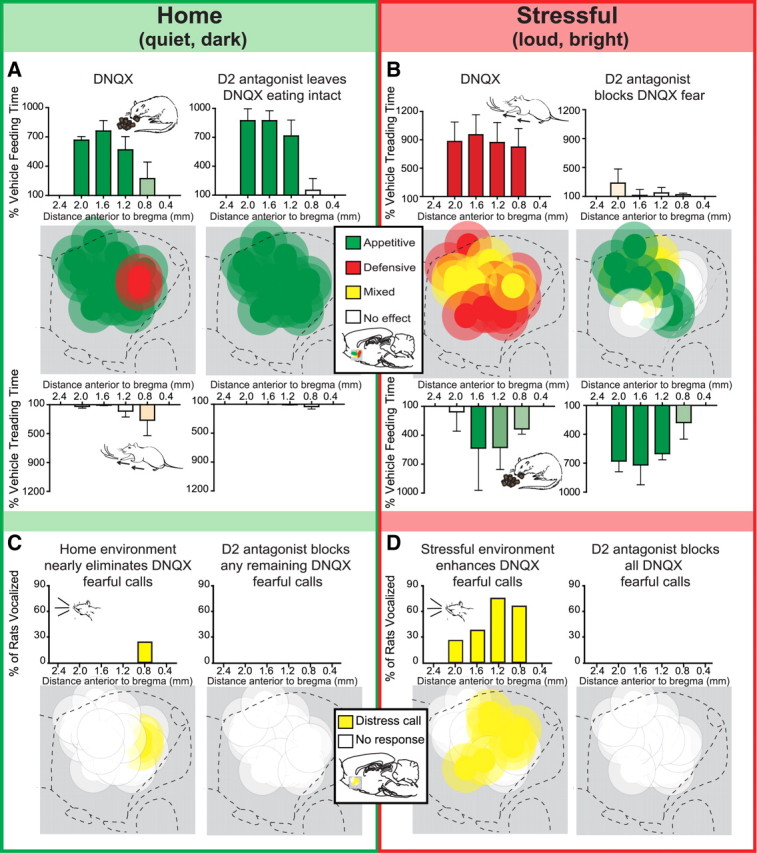Figure 4.

Environmental ambience shifts glutamate/dopamine interaction mode. A–D, Summary maps (n = 10) in sagittal plane show behavior produced by microinjections in the same rats of either DNQX alone or DNQX plus a D2 antagonist (raclopride), each tested both in the home environment (A) and in the stressful (B) environment. Each site was designated in a particular environment as producing primarily appetitive (green symbols), fearful (red symbols), or mixed valence (yellow symbols) motivated behavior following DNQX microinjection. Testing in the home environment caudally expanded the area in which DNQX generated purely appetitive behavior (criteria for including a site was a 200% increase in feeding behavior) and nearly eliminated the ability of DNQX to generate defensive treading behavior, distress calls, or escape attempts at any site. Conversely, testing in the stressful environment rostrally expanded the area of medial shell capable of generating intense fearful behaviors (criteria for including a site was a 500% increase in treading over vehicle levels), so that nearly every rostrocaudal location became able to generate fearful reactions after DNQX microinjections (relative to vehicle). The addition of the D2 antagonist to the microinjection blocked DNQX generation of defensive treading regardless of site. In contrast, the D2 antagonist never blocked the ability of DNQX to stimulate eating behavior and increase food intake. Histogram bars below the maps show mean behavior as a percentage of vehicle for each behavior at the rostrocaudal level as marked along the medial shell, with the dominant behavior stimulated in each environment appearing along the top (home environment, eating; stressful environment, treading; error bars indicate SEM). Maps of fearful vocalizations indicate which rats emitted audible distress calls in response to the experimenter's touch in the home environment (C) and the stressful environment (D) following DNQX alone or DNQX plus the D2 antagonist. Histograms bars above the maps show the percentage of subjects that vocalized at each rostrocaudal level.
